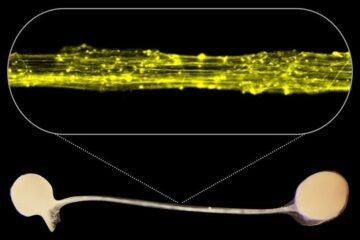Drained wetlands give off same amount of greenhouse gases as industry

Forests and agricultural fields on drained previous wetlands make up between five and ten percent of Sweden’s surface area. When these wetlands are drained, they become a significant source of greenhouse gas emissions.
“We note that drained wetlands which have been forested or used for agricultural purposes are a significant potential source of greenhouse gases of a magnitude that is at least comparable with the industrial sector’s greenhouse gas emissions in Sweden.”
Emissions from these drained wetlands can be reduced, but that involves rewetting the land – resulting in a negative impact on forestry production. According to the researchers, compromises may be necessary.
“As long as wetlands remain wet, only methane is given off,” says Åsa Kasimir Klemedtsson from the Department of Earth Sciences at the University of Gothenburg. “However, for more than a hundred years land has been drained for agriculture and forestry, producing large quantities both carbon dioxide and nitrous oxide.”
Together with researcher Örjan Berglund from the Swedish University of Agricultural Sciences, Dr Kasimir Klemedtsson was commissioned by the Swedish Environmental Protection Agency during the summer and autumn of 2012 to compile information about greenhouse gases from drained wetlands.
New rules were introduced at last year’s Durban Climate Change Conference with the second Kyoto Protocol phase. These rules include the possibility of reporting wetland drainage or rewetting of drained wetlands. Sweden now faces the choice of whether to include these ahead of the second Kyoto Protocol phase.
Contact:
Åsa Kasimir Klemedtsson, Department of Earth Sciences,
+46 (0)31 786 19 60, asa.kasimir@gvc.gu.se
Media Contact
More Information:
http://www.gu.seAll latest news from the category: Earth Sciences
Earth Sciences (also referred to as Geosciences), which deals with basic issues surrounding our planet, plays a vital role in the area of energy and raw materials supply.
Earth Sciences comprises subjects such as geology, geography, geological informatics, paleontology, mineralogy, petrography, crystallography, geophysics, geodesy, glaciology, cartography, photogrammetry, meteorology and seismology, early-warning systems, earthquake research and polar research.
Newest articles

Caution, hot surface!
An international research team from the University of Jena and the Helmholtz Institute Jena are demystifying the mechanisms by which high-intensity laser pulses produce plasma on the surface of solids….

Exploring the Asteroid Apophis With Small Satellites
In five years’ time, a large asteroid will fly very close to Earth – a unique opportunity to study it. Concepts for a national German small satellite mission are being…

First model of the brain’s information highways developed
Our human brain is not only bigger and contains more neurons than the brains of other species, but it is also connected in a special pattern: Thick bundles of neurons…





















